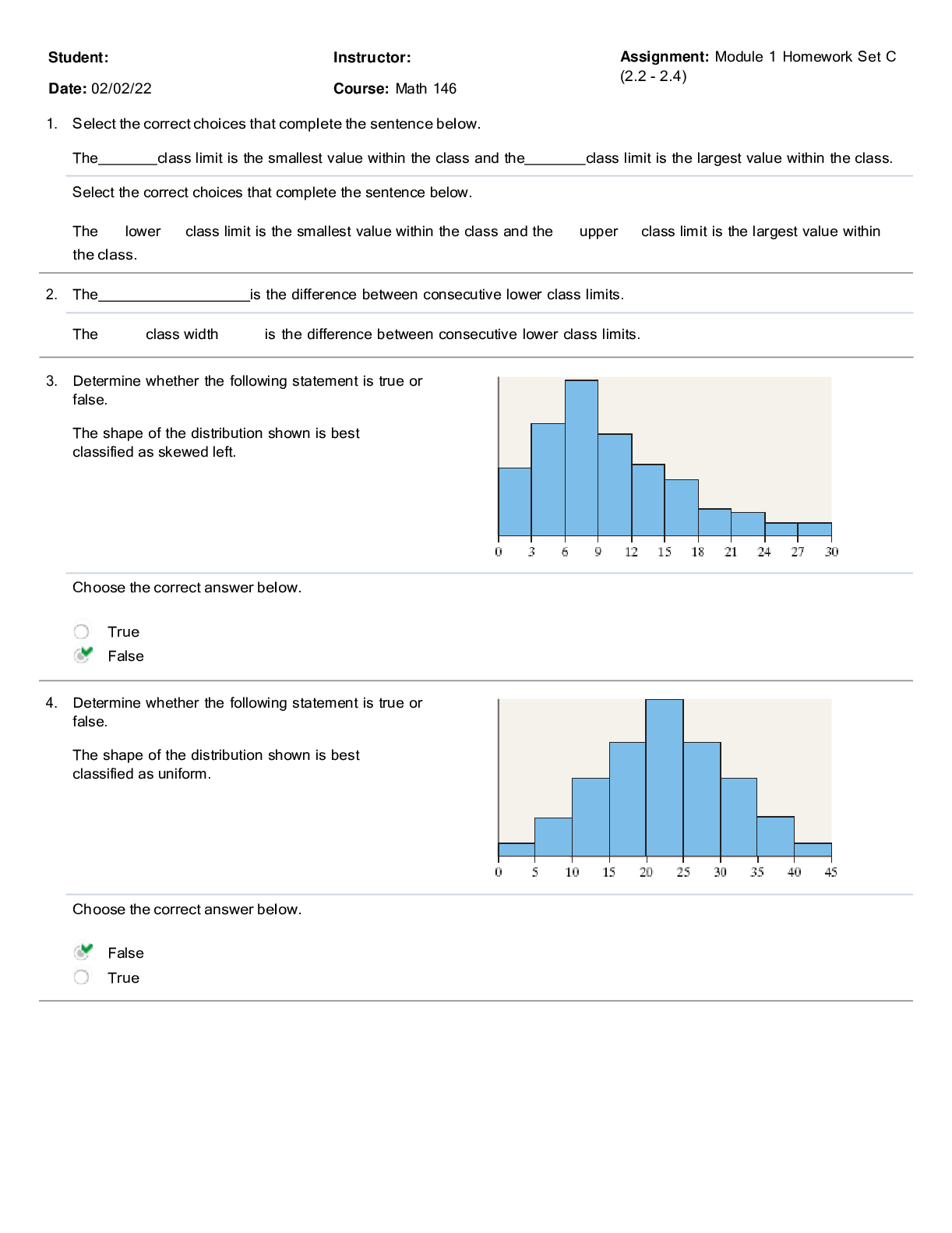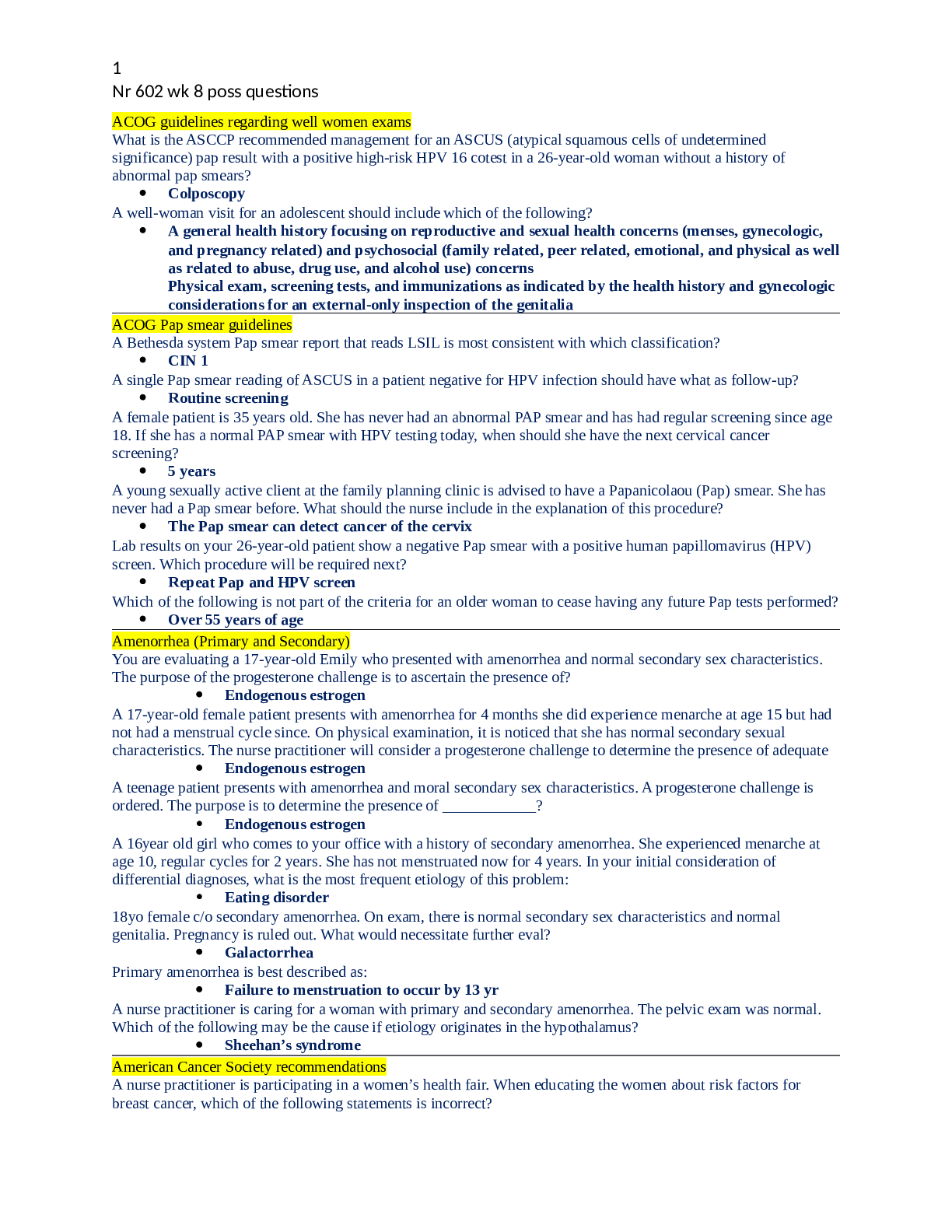BioChemistry > QUESTIONS & ANSWERS > BIO1200 BIOCHEMISTRY BLUE-PACOP Question Bank / 2022 / with verified answers (All)
BIO1200 BIOCHEMISTRY BLUE-PACOP Question Bank / 2022 / with verified answers
Document Content and Description Below
BIOCHEMISTRY BLUE-PACOP __ 1. What two enzymes are used to bypass the pyruvate kinase reaction of glycolysis? I. pyruvate carboxylase II. PEP carboxykinase III. Fructose biphosphatase IV. Gluco... se-6-phosphate A. I & II D. II & IV B. III & IV E. II & III C. I &III __ 2. Which of the following includes the main goals of Pentose Phosphate Pathway? I. produce ribose-5-phosphate for nucleotide synthesis II. produce NADPH and NADP for oxidoreductive biochemical synthesis III. to interconvert pentoses and hexoses A. I & II D. I, II & III B. II & III C. I & III __ 3. Which of the following statements is/are true regarding the secondary structure of nucleic acids? I. Guanine forms base pairs with cytosine via 2 hydrogen bonds II. The B form of the DNA is the most common in biological systems III. The breaking of H-bonds caused by high temperature is called melting A. I,II & III D. I & II B. I & II E. II only C. II & III __ 4. The phospholipid, phosphatidylinositol 4,5-biphosphate forms the potent secondary messengers inositol triphosphate & diacylglycerol via what enzyme? A. Phospholipase A D. Phospholipase B B. Phospholipase C C. Phospholipase D __ 5. Which of the following is not true regarding the four enzyme complexes of the electron transport chain? A. Complex I is known as the NADH-CoQ Oxidoreductases B. Complex II is known as Succinate-CoQ Oxidoreductases C. Complex III is known as Cytochrome Oxidase D. Complex IV is known as Cytochrome Oxidase __ 6. Glucose and mannose are epimers at: A. Carbon 4 C. Carbon 3 B. Carbon 2 D. Carbon 5 __ 7. One important endogenous molecule for synthetic biotransformation of xenobiotics is glucoronic acid. It is actually the most dominant conjugative biotransformation pathway due to the readily available source of glucose. It is produce from glucose via: A. Oxidation at carbon 1 C. Oxidation at carbon 6 B. Oxidation at carbon 2 D. Oxidation at carbon 1 & 6 __ 8. Which of the following is not true about protein structure determination? A. NMR is the primary means of determining protein structure B. Protein are difficult to crystallize, a disadvantage of x-ray crystallography C. An advantage of the use of the NMR is that proteins analyzed are in their natural state D. Large and very complex proteins can only be analyzed by x-ray crystallography __ 9. Tertiary structures of proteins are primarily stabilized by I. H-bonds II. Hydrophobic interactions III. Ionic bonds IV. Disulfide bonds A. I & III D. I, II& IV B. II & IV E. II, III & IV C. I,III & IV __ 10. In an uncompetitive inhibition of enzymatic action : A. Inhibitor binds either to the free enzyme or the enzyme substrate complex B. Lineweaver-Burk plots of the enzyme alone (control) & the enzyme + inhibitor are parallel to each other C. The apparent Km is raised D. The Vmax is unaffected __ 11. Which biomolecule is not considered a biopolymer? A. Proteins D. Nucleic acids B. Lipids E. Fat C. Carbohydrates __ 12. It is regarded as the universal biological energy currency A. Adenosine triphosphate C. Uncouplers B. Guanosine triphosphate D. Calories __ 13. This is the final electron receptor of the electron transport chain A. Complex I C. Complex V B. Complex II D. Complex IV __ 14. The most accepted hypothesis regarding oxidative phosphorylation is A. Chemical coupling D. Lock and Key Theory B. Conformational coupling E. Diffusion C. Chemiostatic hypothesis __ 15. This is a quantitative study of the energy transformationsin the living cell A. Bioenergetics C. Proteonomics B. Thermodynamics D. Metabolomics __ 16. Which of the following hormones promotes rapid glycogenolysis in both liver and muscle A. ACTH C. Epinephrine B. Glutemine D. Prolactin __ 17. Which vitamin can be used in the management of hyperlipidemia? A. Thiamine C. Niacin B. Riboflavin D. Panthotenic acid __ 18. Bond between 2 amino acids A. Glycosidic bond C. Peptide Bond B. N-glycosyl linkage D. Hydrogen bond __ 19. Beta oxidation of fatty acids occurs in the A. Cytosol C. Endoplasmic reticulum B. Mitochondria D. Ribosomes __ 20. The pentose phosphate pathway occur in the ________ of the liver, muscle and kidney. A. cytosol C. endoplasmic reticulum B. mitochondria D. ribosomes __ 21. The isoelctric point is the A. pH where the alpha amino acid exist in its negatively charged form B. pH wherein the amino acid exist in zwitterionic form C. Temperature at which the amino acid denatures D. Pressure at which the amino acid hydrolyzes __ 22. This is the only optically inactive amino acid A. methionine C. Citrulline B. Lysine D. glycine __ 23. This level of protein structure is applicable only to those have several subunits A. Primary C. Tertiary B. Secondary D. Quaternary __ 24. Arginine is the only metabolite of the urea cycle that does not accumulate because A. It is readily excreted B. It is used up by the body for protein synthesis C. There is no known deficiency in the enzyme that catabolizes it D. It can ve acquired from food __ 25. This is the genetic condition characterized by deficiency of the enzyme branched chain alpha-keto acid dehydrogenase A. Maple syrup disease C. Kwashiorkor B. Hartnup disease D. Marasmus __ 26. These are compounds related to cerebrosides that contain sphingsine, long chain fatty acids, hexoses (usually galactose or glucose) and neuramic acid A. cephalins C. cytolipins B. gangliosides D. lecithins __ 27. This enzyme catalyzes the conversion fructose-6-P to fructose-1,6-bis-P A. hexokinase C. PFK B. pyruvate kinase D. glyceraldehyde phosphate dehydrogenase __ 28. Which of the following is called transamination? A. Conversion of amino acids to hydroxyl groups B. Conversion of amino acids to keto acids C. Loss of ammonia from amino acids D. Formation of ammonium salts from ammonia E. __ 29. The sugar involved in the DNA A. ribose C. deoxyribose B. pentose D. xylose __ 30. Thisis the reason why blood AB is considered as the universal recipient. A. It is the most common among the ABO blood types B. Blood type AB has neither A nor B substances C. Blood type AB has either anti-A nor anti-B antibodies D. All of the above __ 31. Which one is true regarding the structures of lipids? A.Eicosanopentanoic acid is a saturated fatty acid B. They may exist as esters of cholesterol when they are enclosed in very low density C. Linoleic acid is an omega-3 fatty acid D. Capric acid contains 12 carbons __ 32. This is the product of basic hydrolysis of fats and oils A. fatty acid C. soap B. triacylglycerol D. detergent __ 33. The group of lipids is considered amphipathic A. sterols C. trans-fatty acids B. fatty acids D. phospholipids [Show More]
Last updated: 1 year ago
Preview 1 out of 104 pages
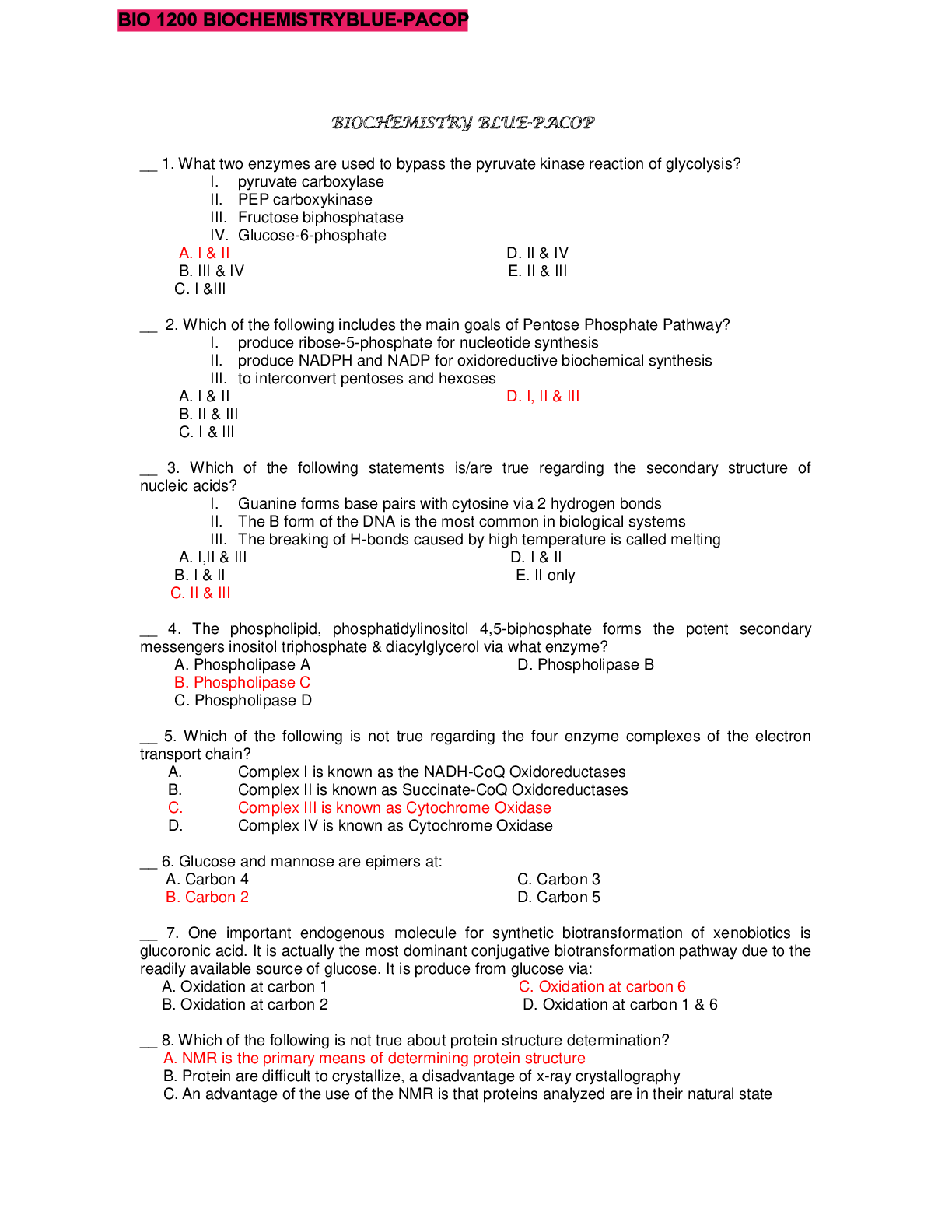
Reviews( 0 )
Document information
Connected school, study & course
About the document
Uploaded On
Aug 10, 2022
Number of pages
104
Written in
Additional information
This document has been written for:
Uploaded
Aug 10, 2022
Downloads
0
Views
35




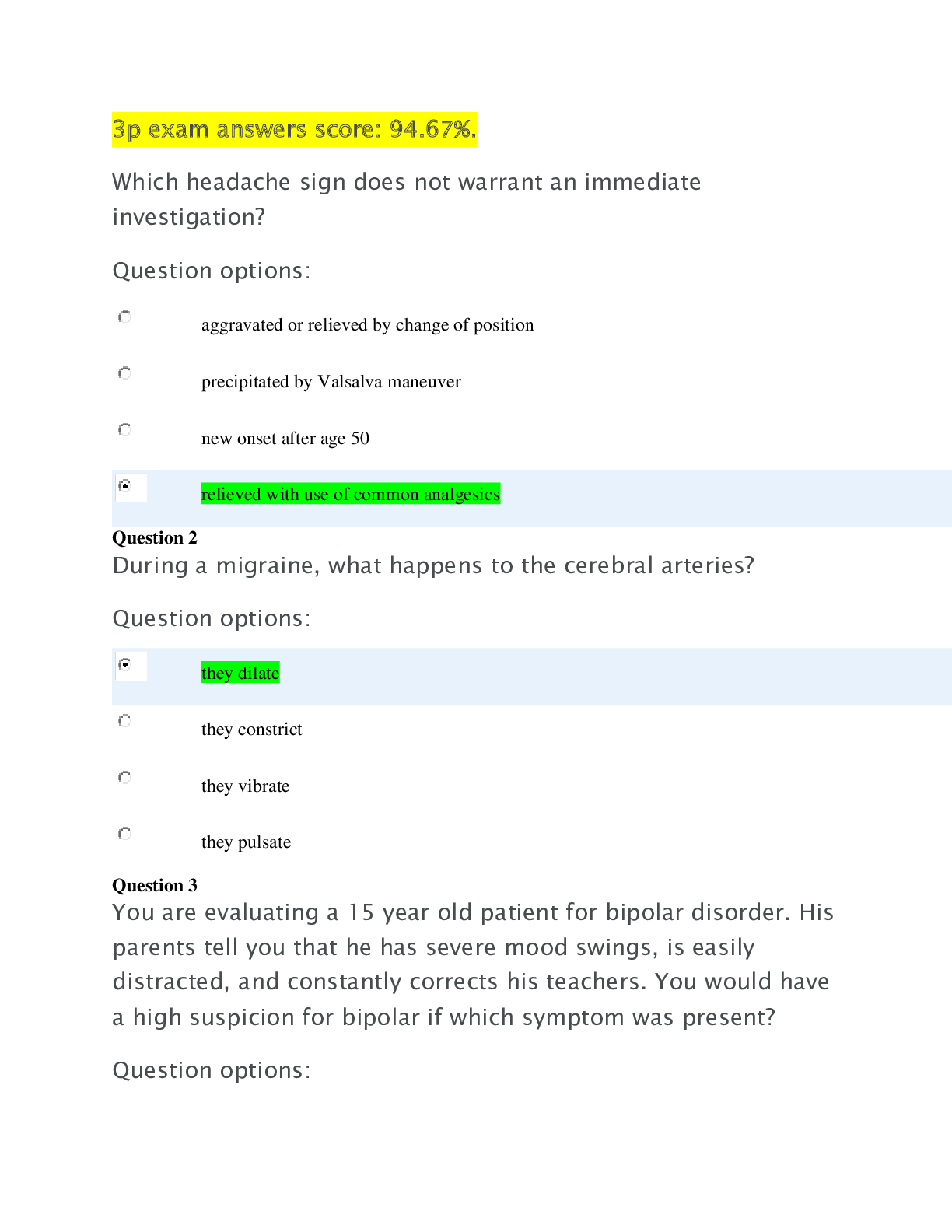

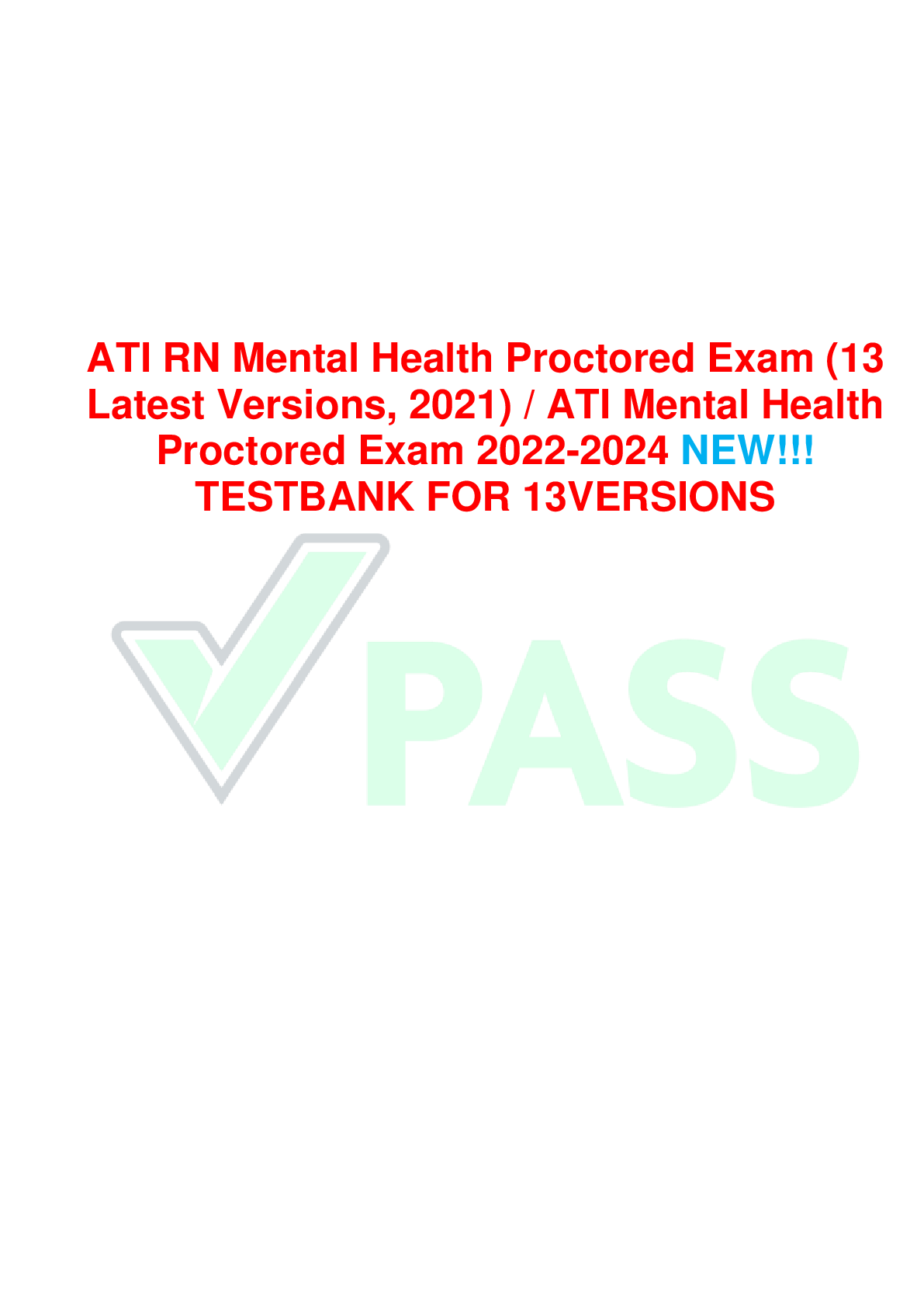
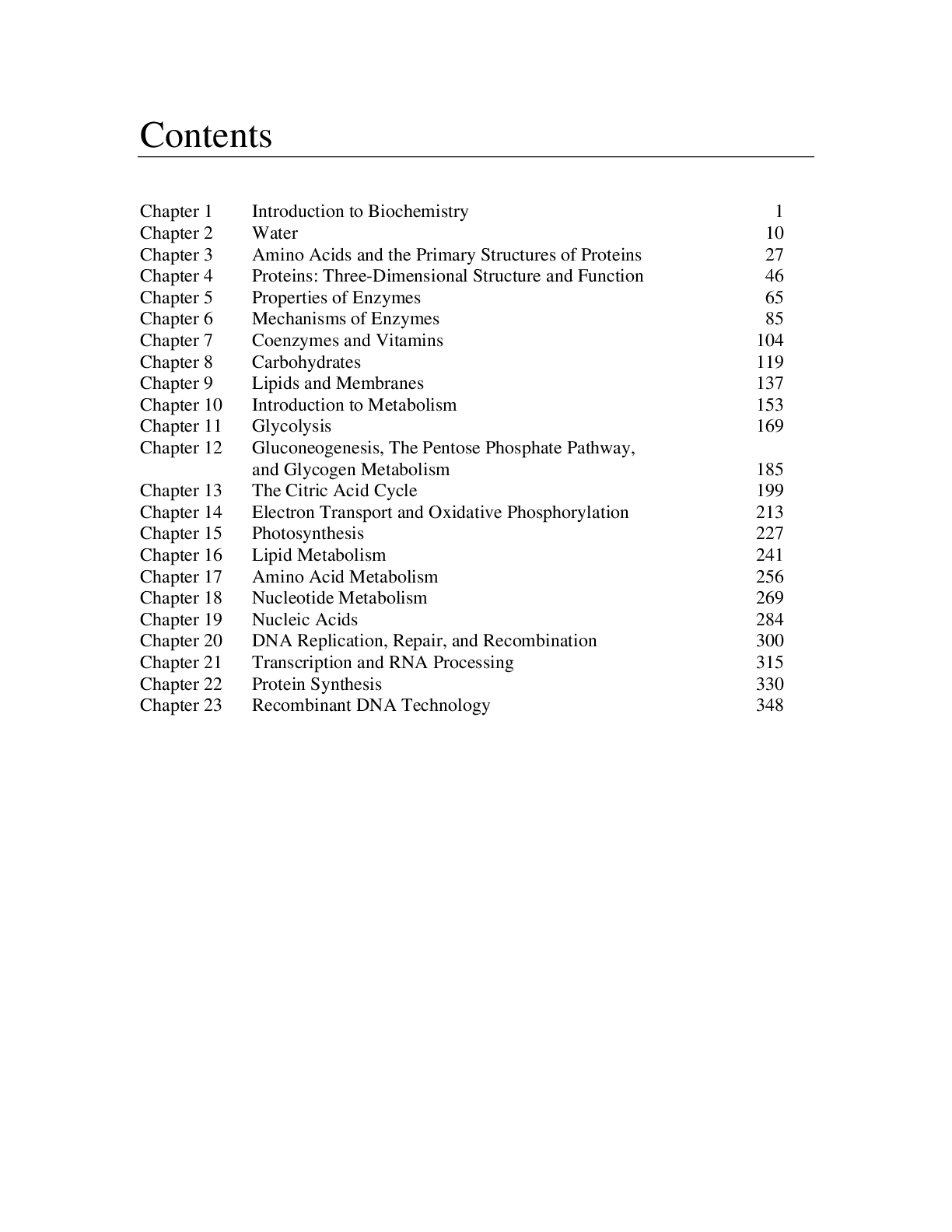
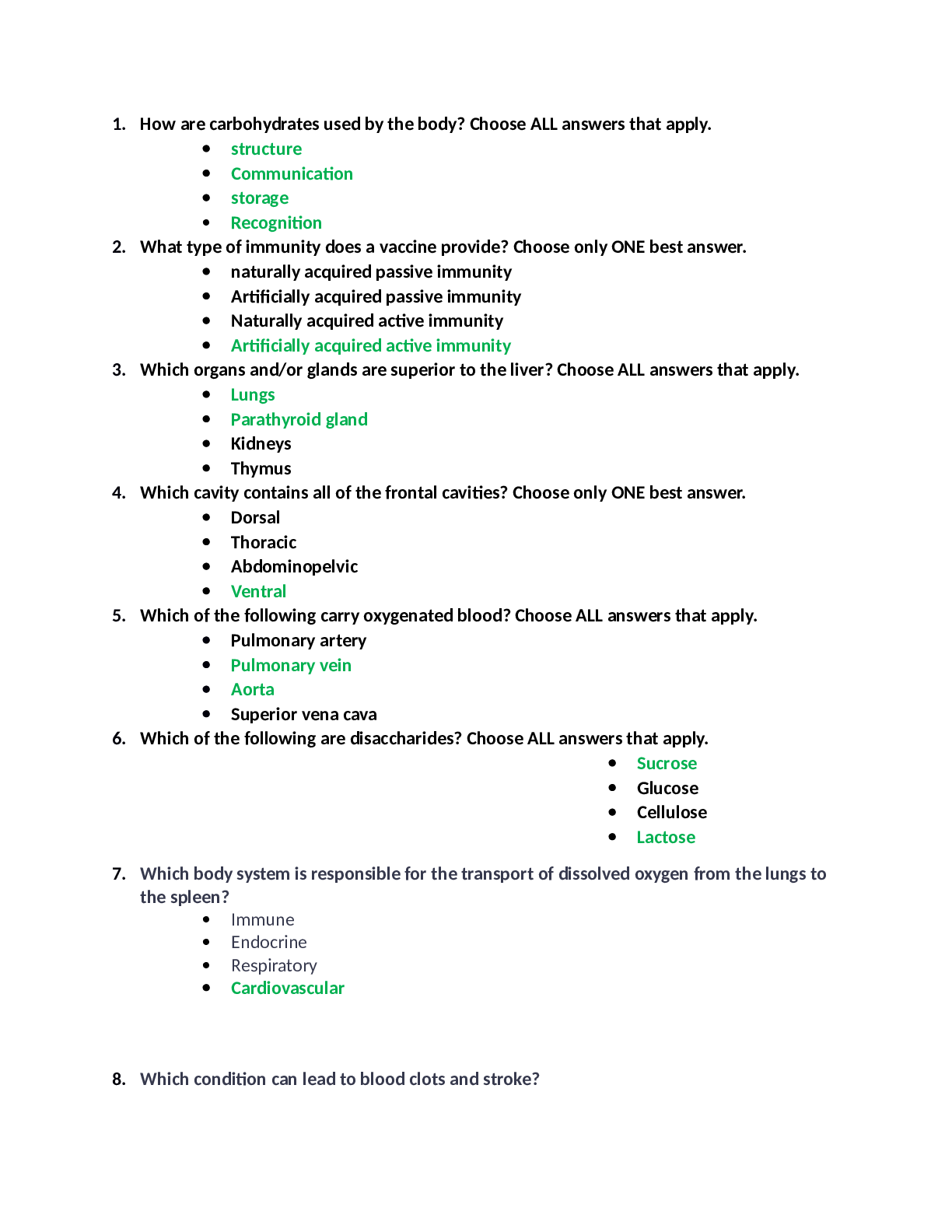

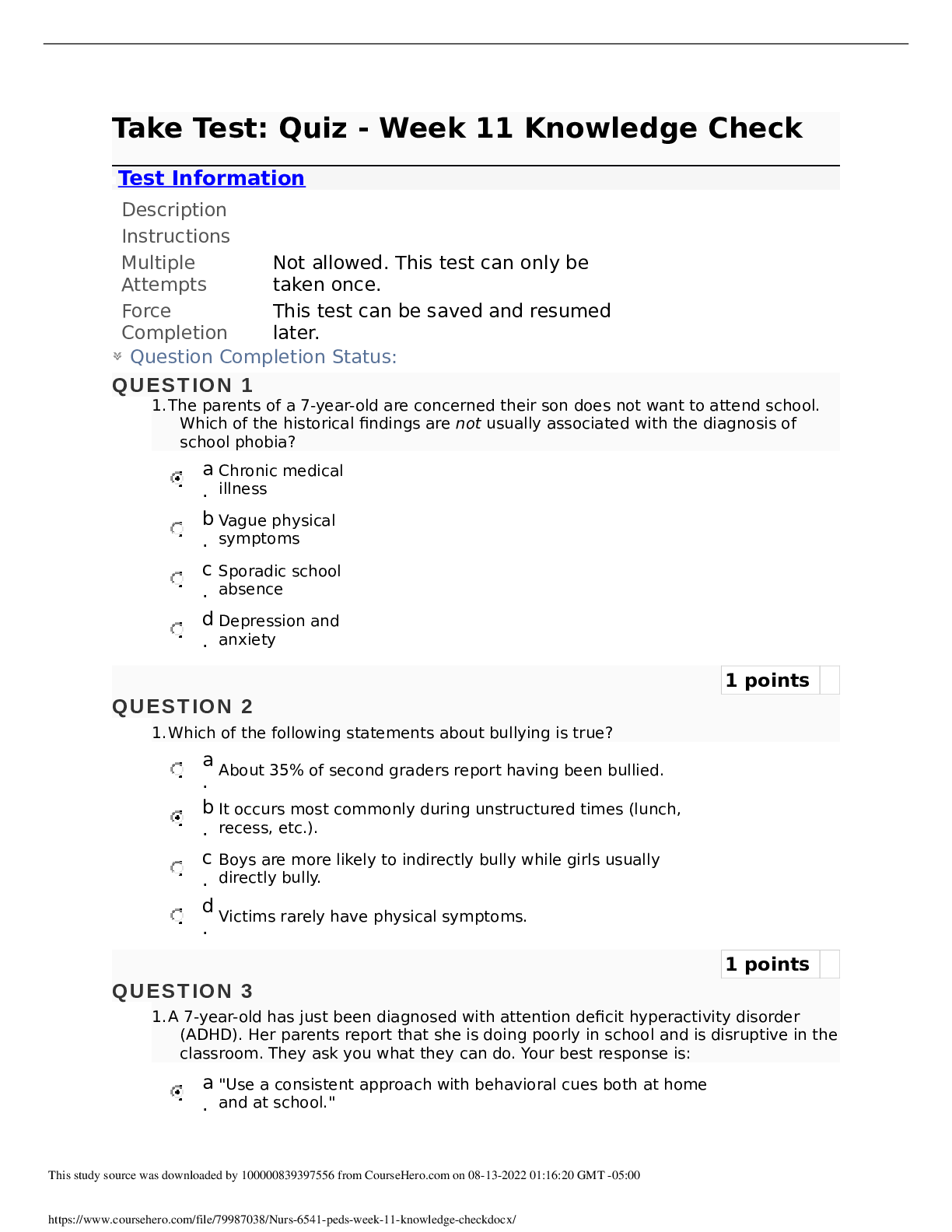

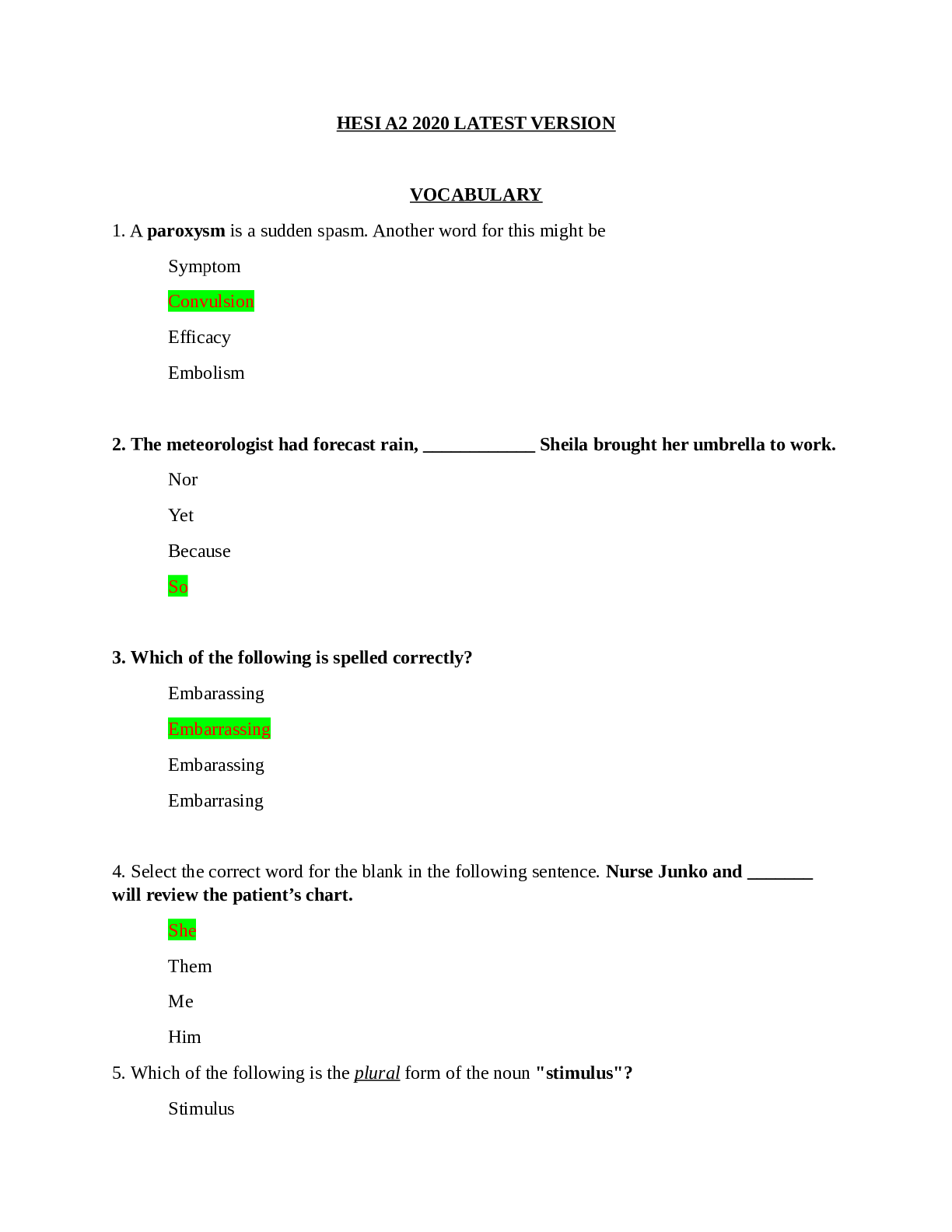
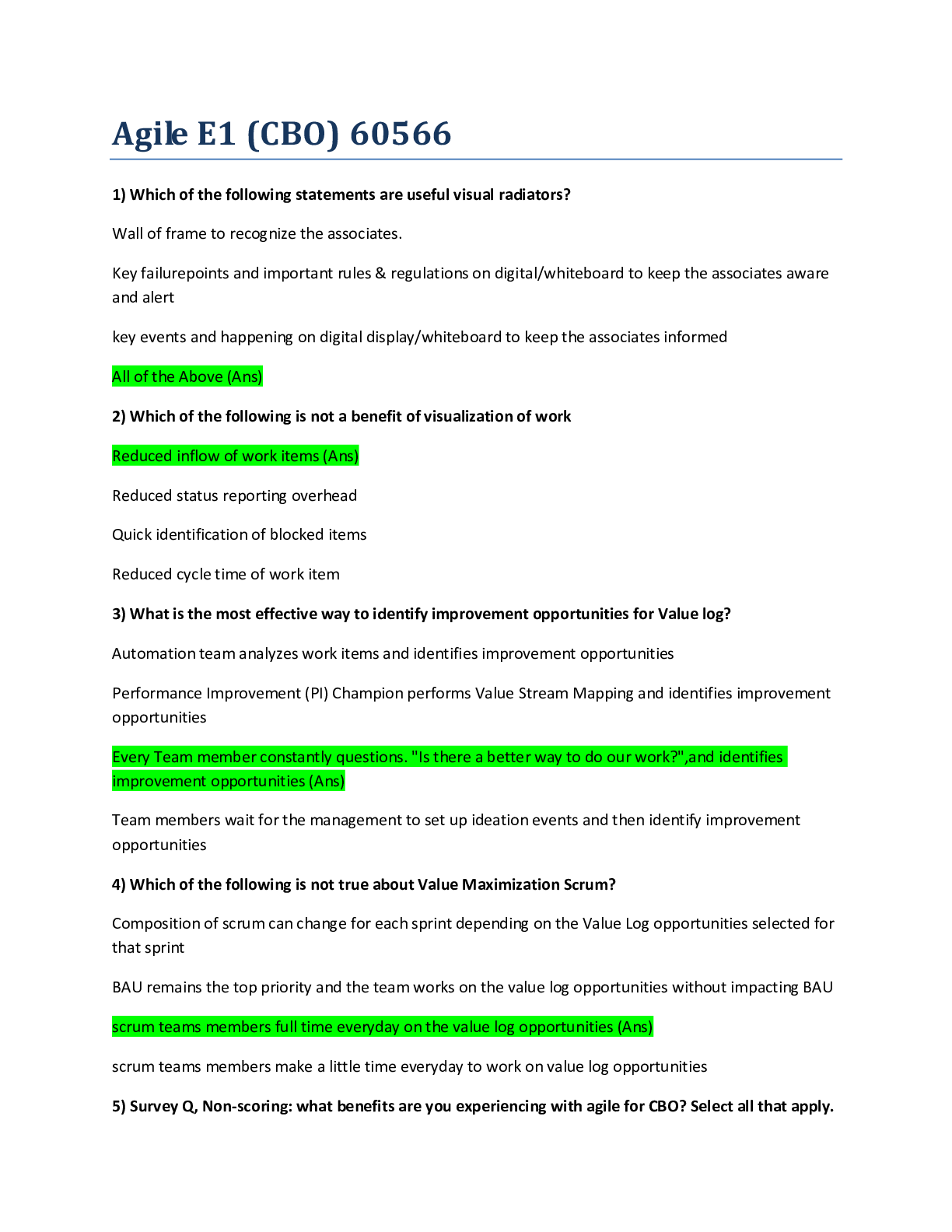

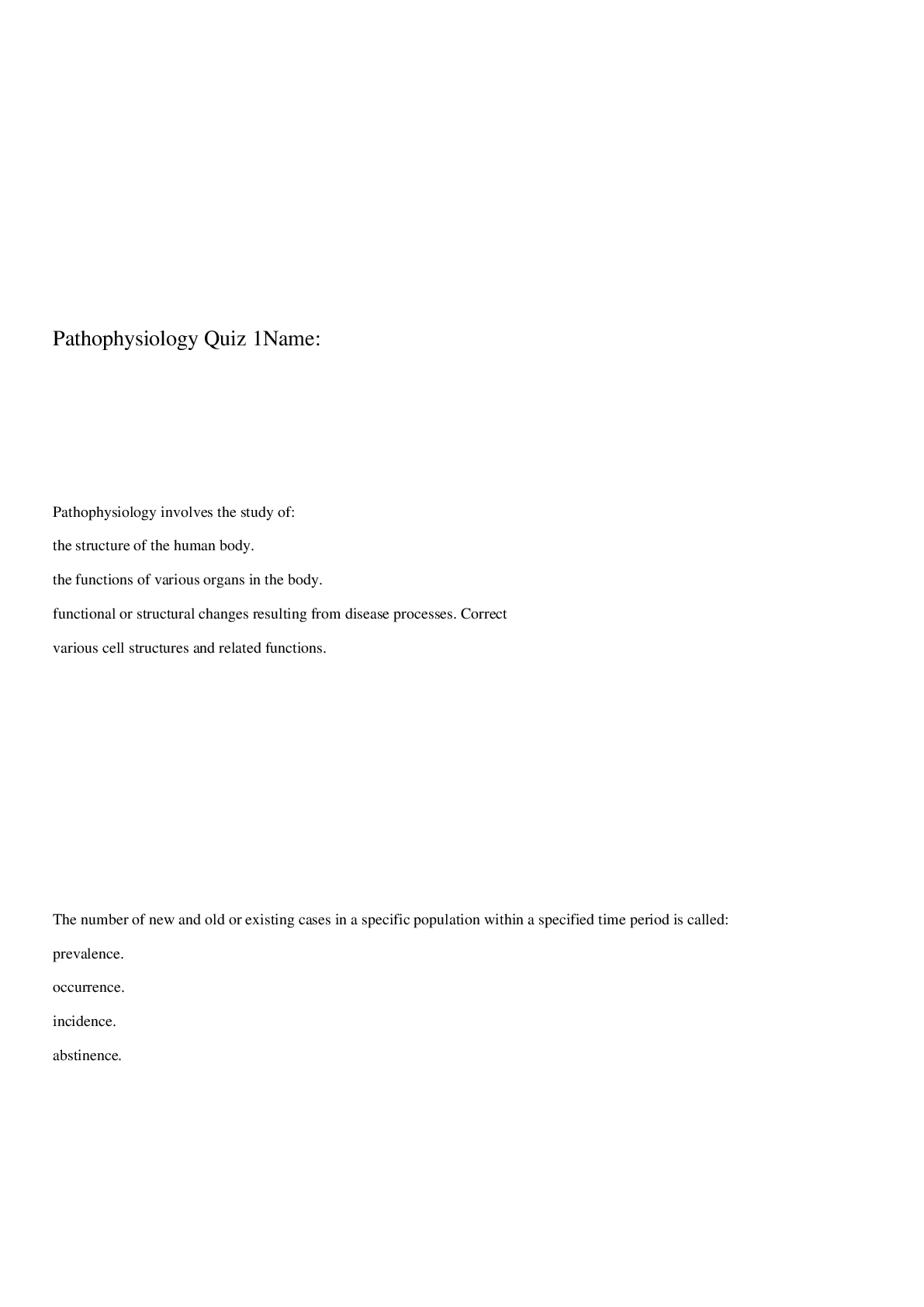


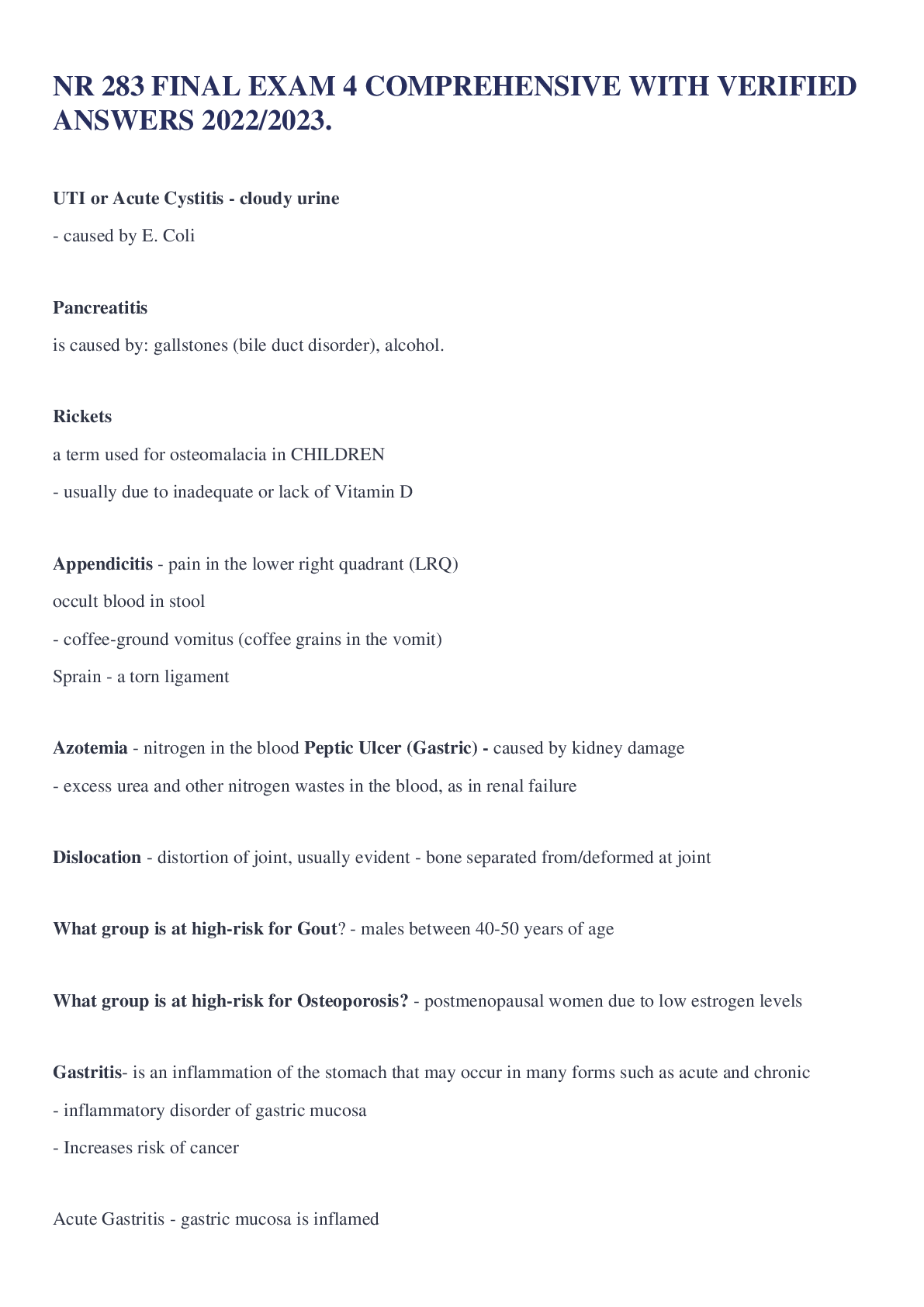


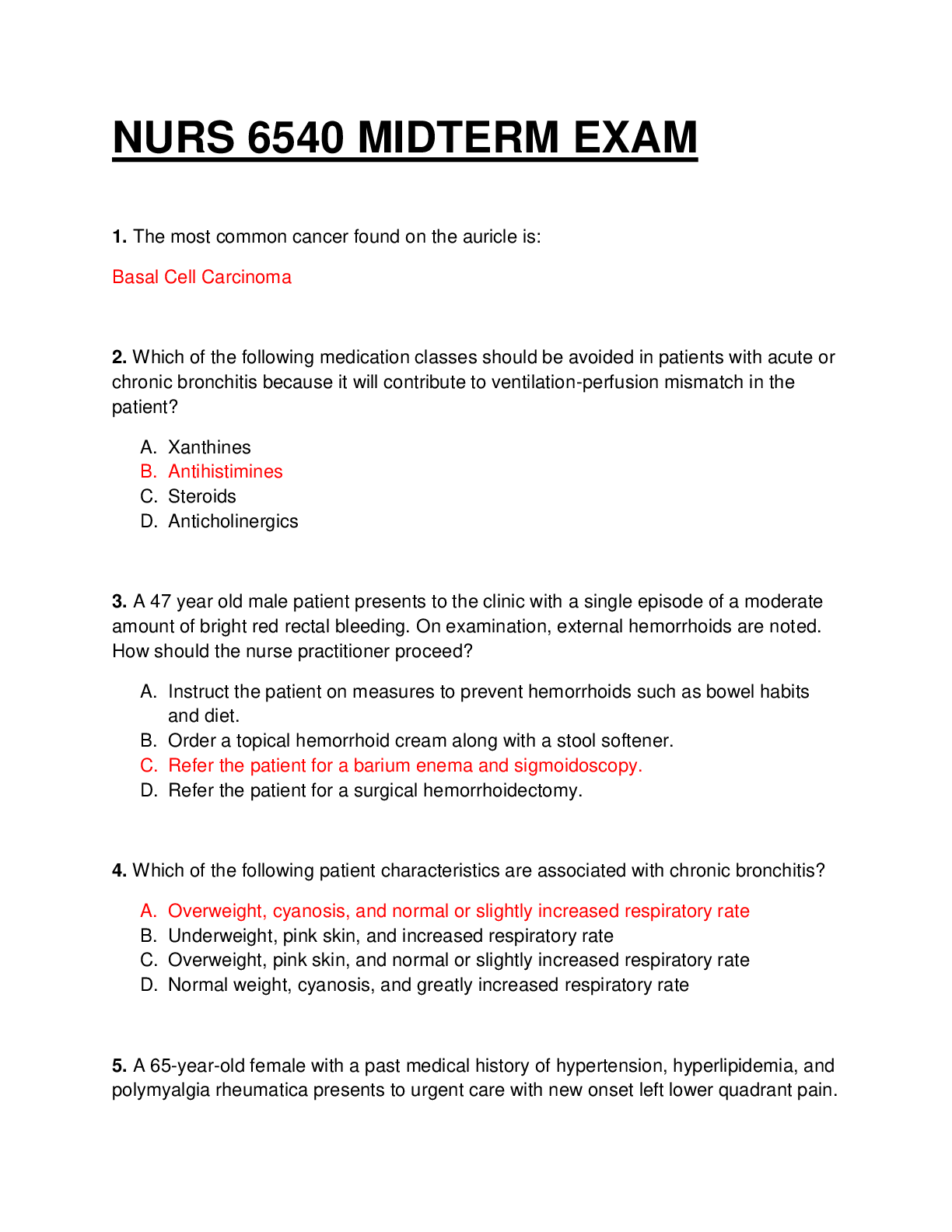
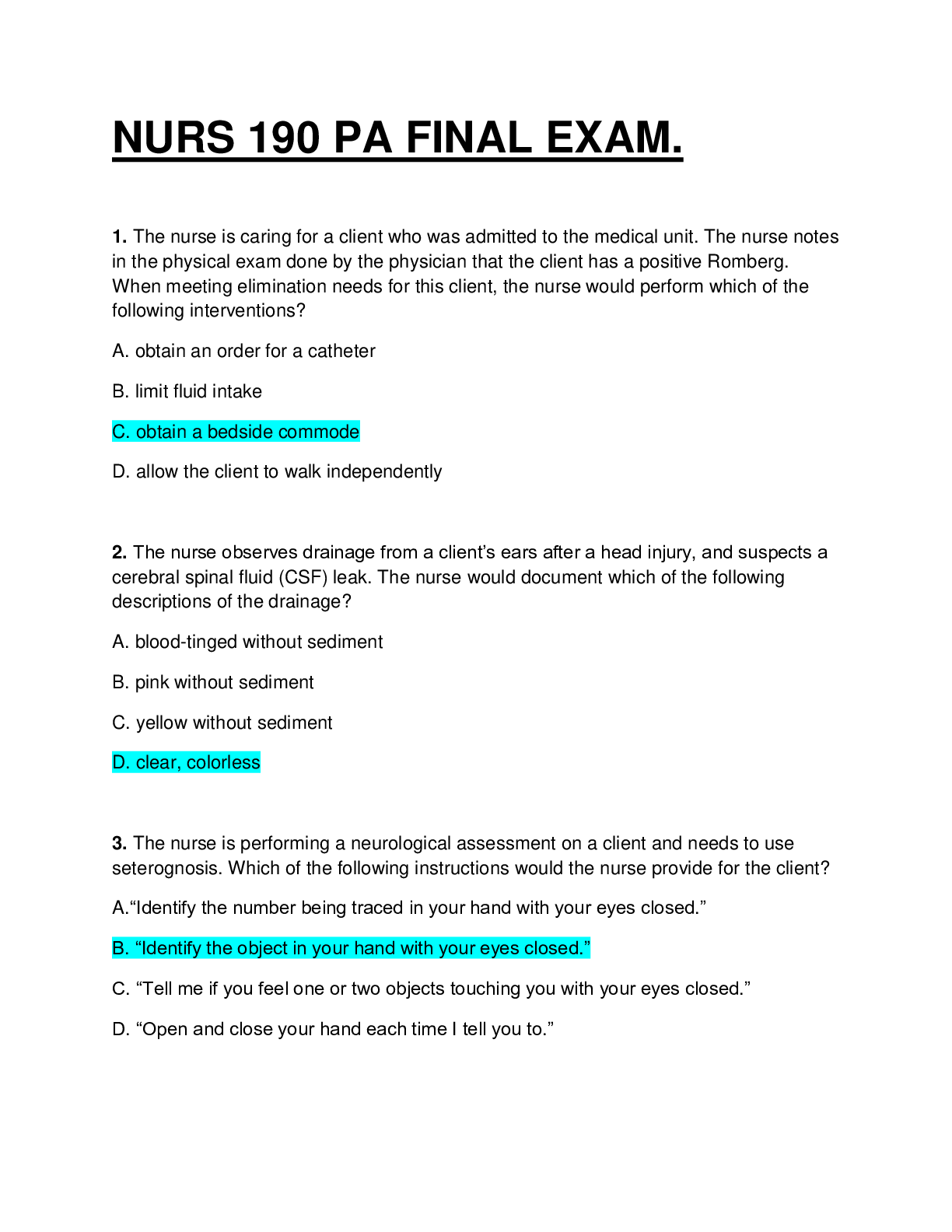
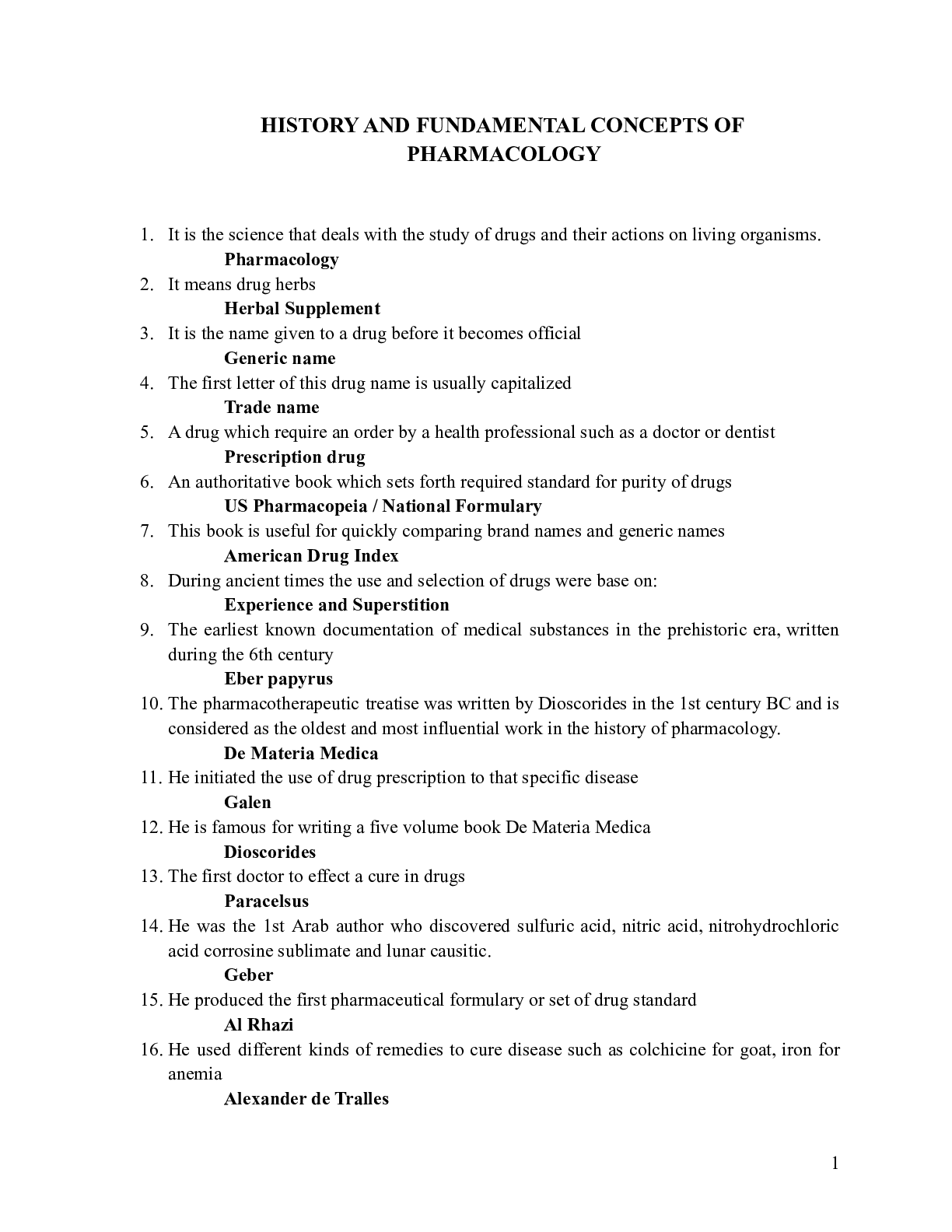
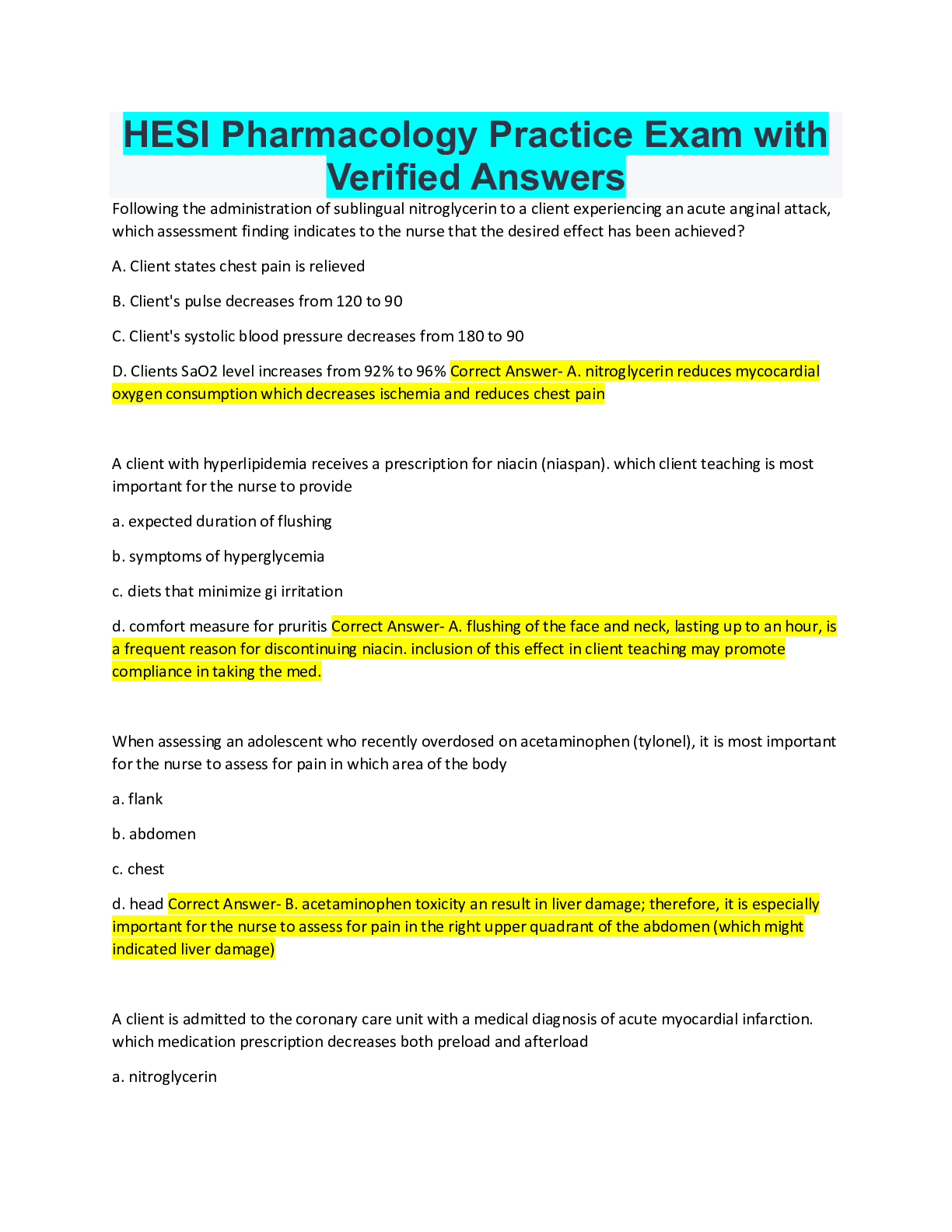
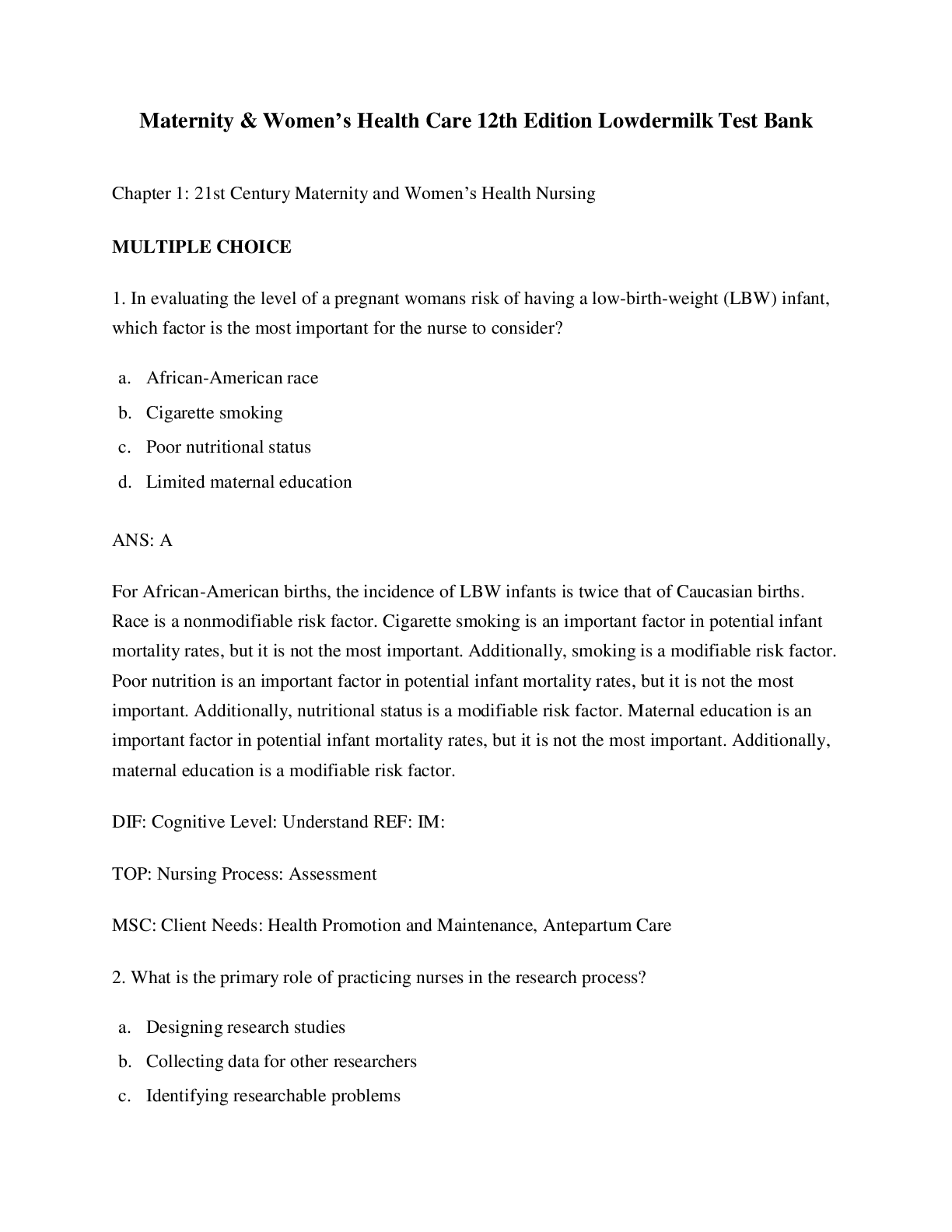
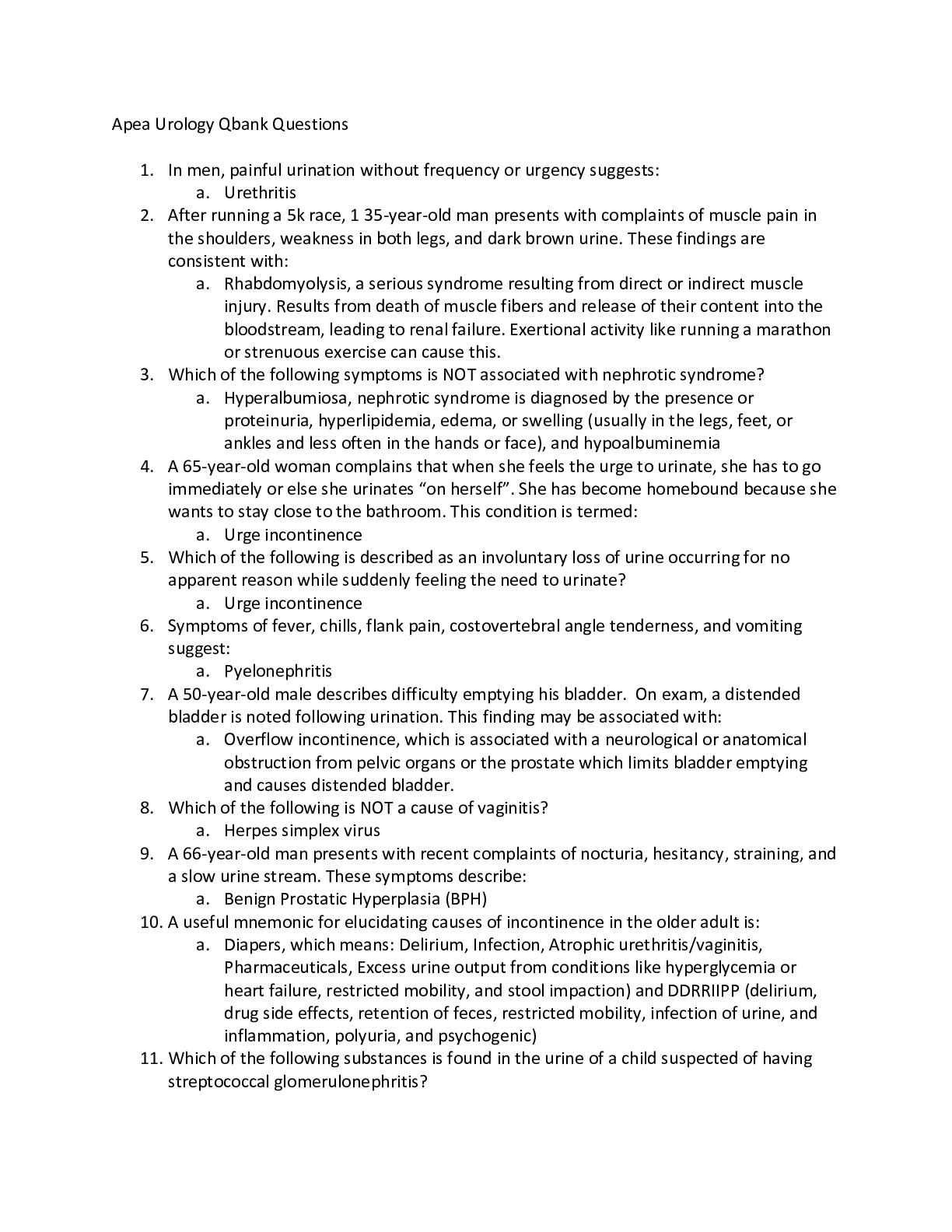

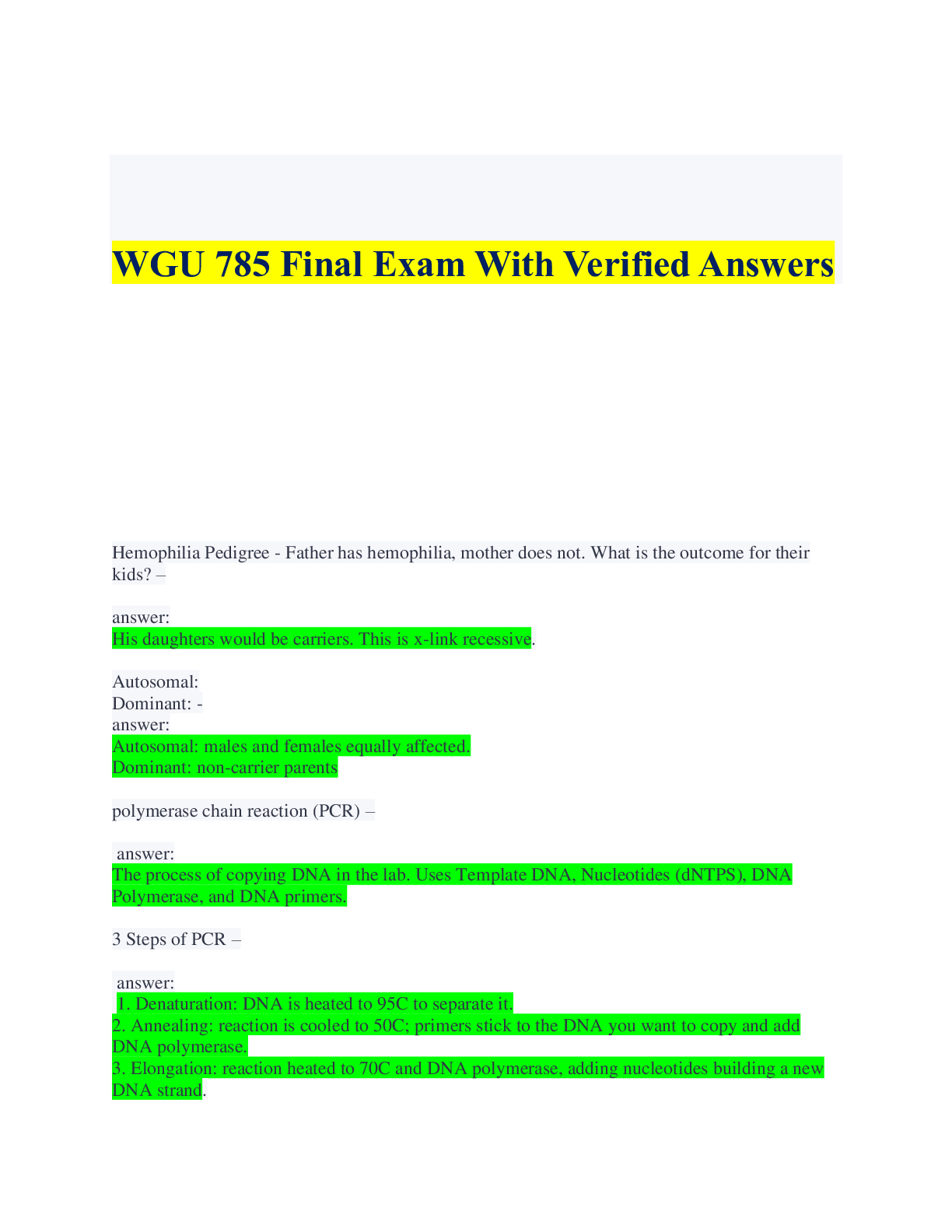
.png)
